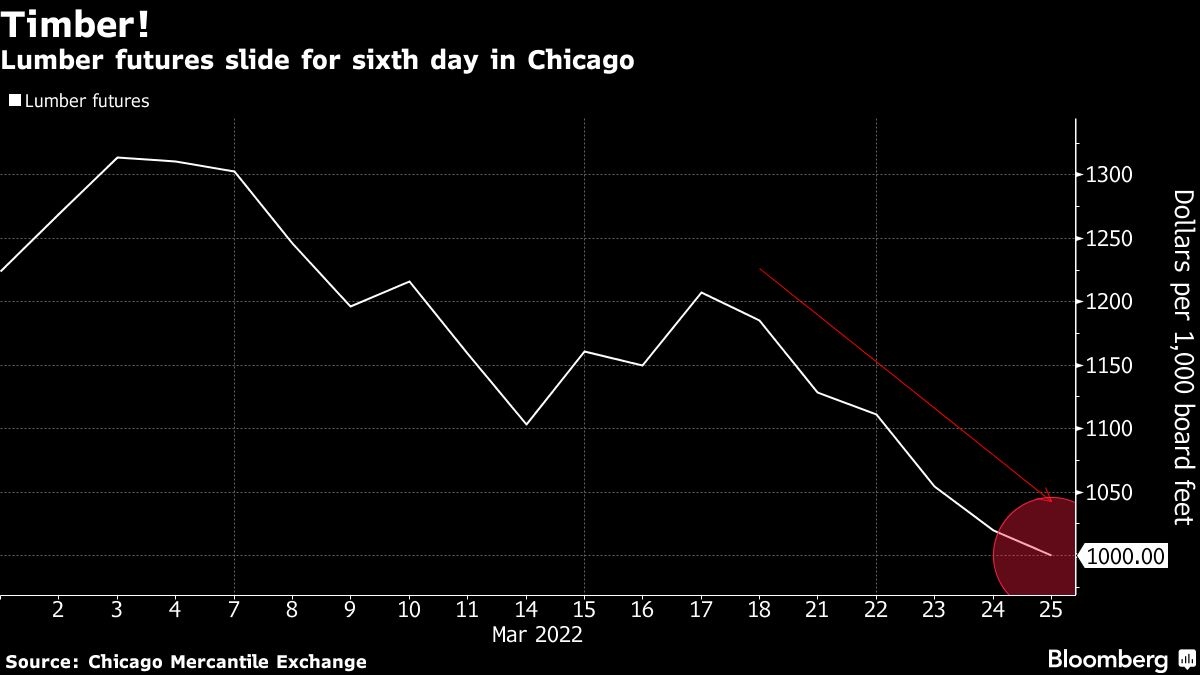Mar 25, 2022
Lumber rally cools with transport snarls easing, buyers balking
, Bloomberg News
We want to make sure our company grows with an exclusive focus on lumber: GreenFirst chairman
Lumber headed for its biggest weekly loss since July as transportation snarls that sparked a rally start to ease.
Futures tumbled to US$974.80 per 1,000 board feet on the Chicago Mercantile Exchange on Friday, heading for a sixth straight decline. That’s the longest slump since January. The pullback signals soaring costs are crimping consumer demand, just as more timber supplies are set to hit the market.
“I think the price decline is tied to the DIY (do-it-yourself) sector slowing down due to high lumber prices, with people spending their money on other things like travel,” said Russ Taylor, president of Russ Taylor Global in Vancouver.
Lumber prices, which reached a record high in May, had soared anew in recent weeks as deliveries to customers slowed. Flooding in British Columbia disrupted supplies in late 2021, and volumes that were stuck at mills in the West will move more quickly in better spring weather, resulting in more supplies in the market after months of tight inventories, Taylor said.
Wood prices have been volatile since the pandemic began. They touched the record highs amid a COVID-19 inspired building boom, then collapsed because sawmills ramped up production and high prices stifled demand.
Buyers may have extra inventory once all their late shipments show up as transportation challenges ease, said Steve Loebner, director of risk management at Sherwood Lumber. Higher prices for all consumer goods and higher interest rates are also making homes less affordable, he said.
“Overall demand is still strong right now but there are headwinds in terms of overall affordability,” Loebner said in an email.





